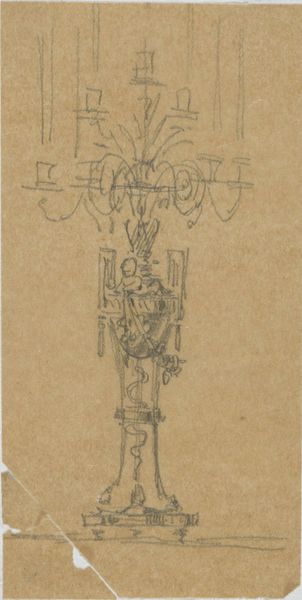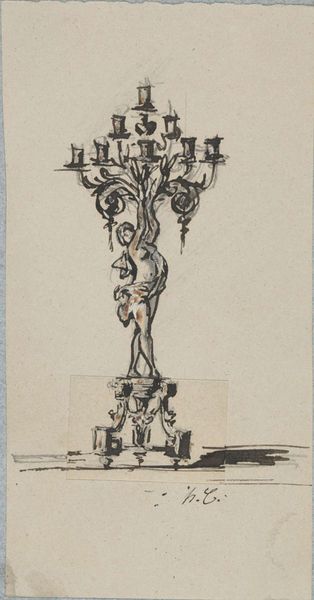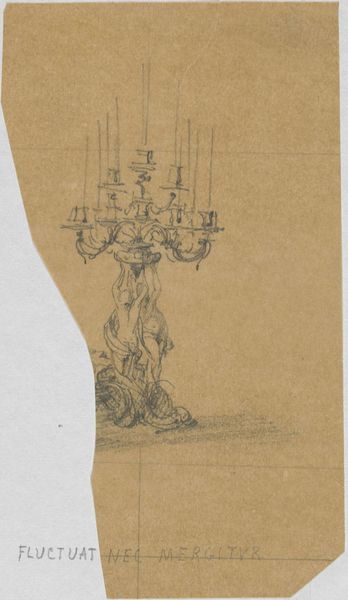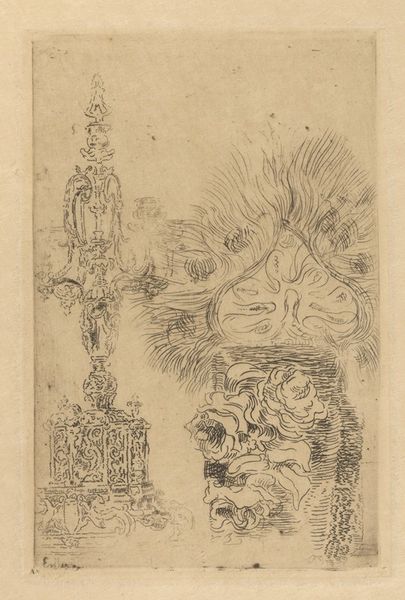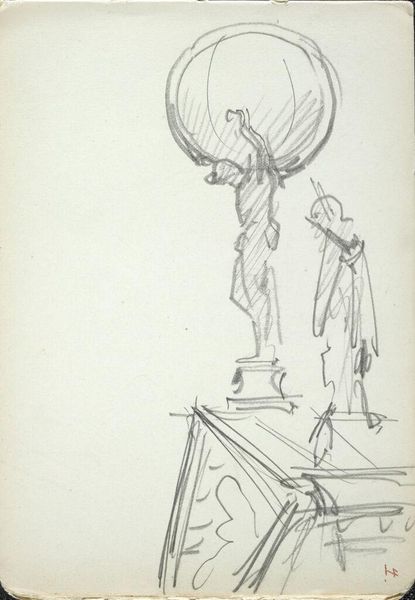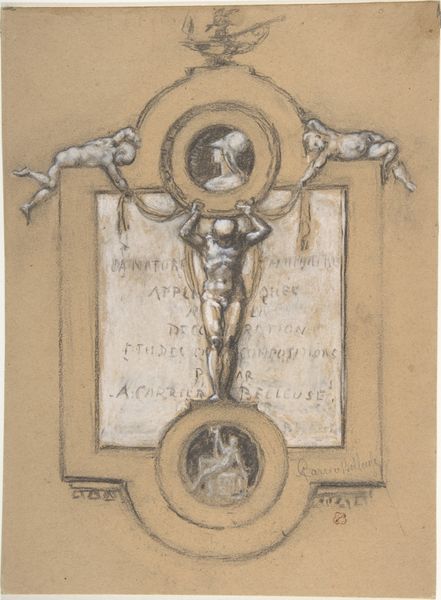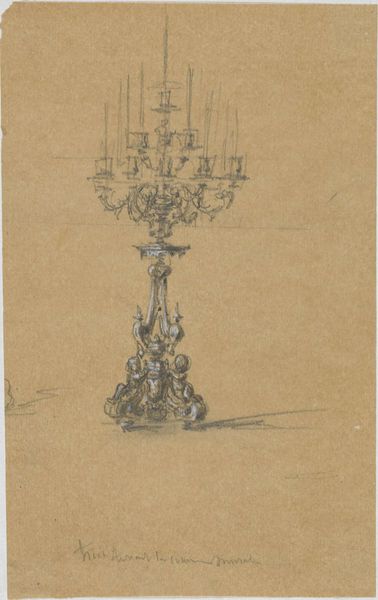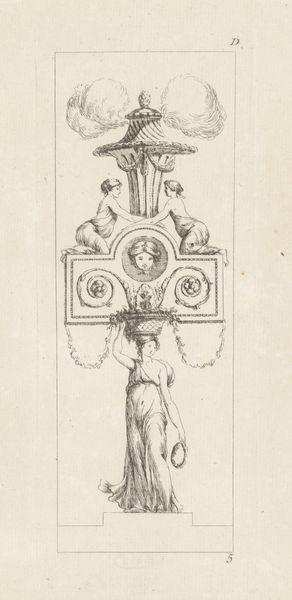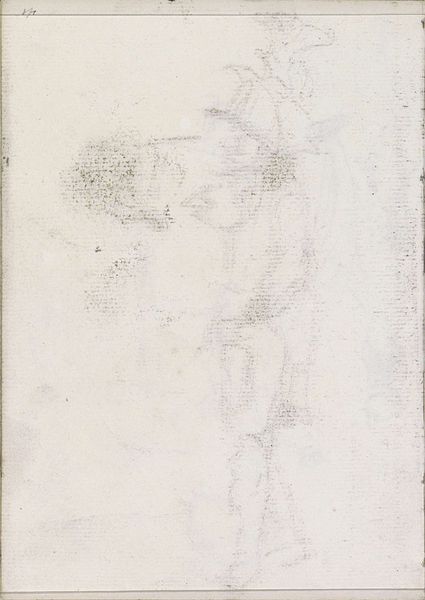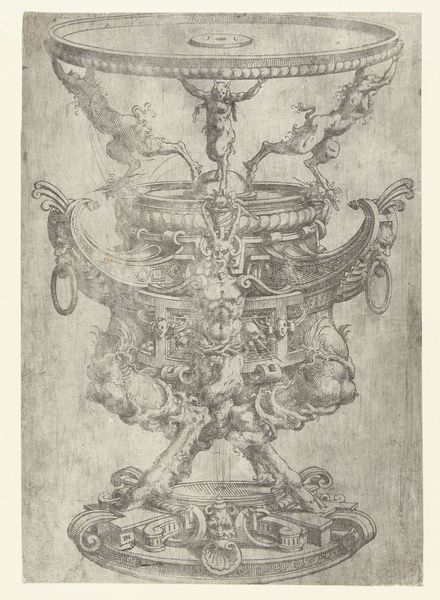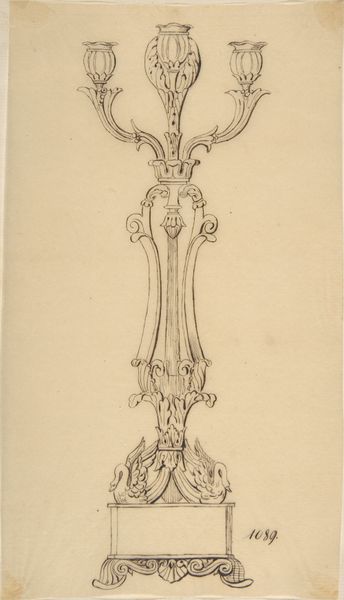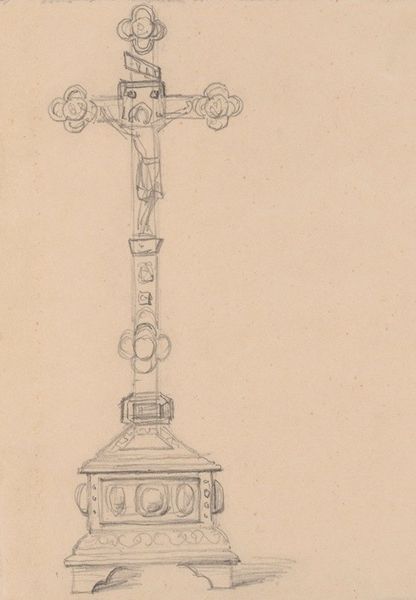
drawing, pencil
#
drawing
#
figuration
#
pencil
Dimensions: height 114 mm, width 69 mm
Copyright: Rijks Museum: Open Domain
Curator: Henri Cameré's pencil drawing, "Ontwerp voor een kandelaber met vrouwenfiguur", translates to "Design for a candelabra with a female figure." It dates to around 1864-1894. Editor: My immediate impression is of delicacy, a certain vulnerability even. The slightness of the lines lends an almost ethereal quality to what is, in essence, a very material object: a candelabra. Curator: Precisely. The pencil medium emphasizes its design stage, and we see Cameré's process. The candelabra would have required a team of skilled artisans from metalworkers and sculptors to glassmakers, reflecting a complex labor system, especially during a period marked by significant industrial change. How did the conditions and hierarchies of labor factor into the realization of the drawing into an object? Editor: That is a critical point to underscore. Beyond labor conditions, there is the undeniable imagery: the central figure, seemingly female, holds the weight of the candelabra. This resonates with historical tropes of women carrying societal burdens, even if unintended by Cameré. What does this visual weight symbolize regarding gendered expectations during the Victorian Era when it was made? Curator: Let's also remember it is an object of lighting, intended for the homes of the bourgeoisie, who at the time exerted a distinct kind of labor to uphold systems of governance in many Western nations. Its preciousness underscores its social role as something enjoyed within a specific social stratum. Editor: True, but light illuminates and reveals. Is there a latent tension between the ostentatious display of wealth and the shadows it necessarily casts—the obscured labor, perhaps even societal inequalities? Curator: By deconstructing these material artifacts, we also start to perceive the nuances involved in designing domestic interiors. As a mere sketch, this piece makes the work visible—revealing more about the material world and economy than intended. Editor: Ultimately, the sketch is about power and gender, even class, but we wouldn’t register all of this were we only considering a "finished" work of art divorced from labor and design. Curator: Precisely, the inherent design thinking opens avenues to look critically at material realities of labor in the past. Editor: It encourages a far more reflective understanding of historical artistic creations.
Comments
No comments
Be the first to comment and join the conversation on the ultimate creative platform.

